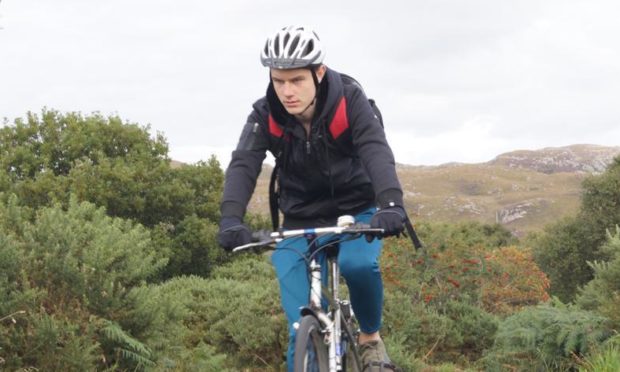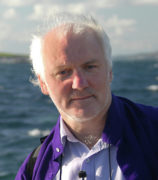My 17-year-old son and two of his pals recently cycled over 400 miles from Edinburgh to the Isle of Skye through the triple dangers of traffic, rain and midges.
They survived thanks to travelling off-road, good waterproofs and cycling so fast that the meanbh-chuileagan couldn’t catch up.
It took the boys six days. The first (dreich) day along the Forth and Clyde Canal to Balloch. The second (sunny) day up the West Highland Way to Glencoe. The third to Glen Nevis. The fourth they took a rest, except they ran up Ben Nevis while they waited. The fifth along the Great Glen Way, where they camped at Dores by Loch Ness. And the sixth day onwards to Inverness and west.
They did it for fun, but also raised funds for the Alzheimer’s Society while they were at it, raising over £1,500 for that hugely-deserving charity and the important work they do. Thanks to the lads, and to everyone who contributed and helped along the way.
I used to cycle. As a child we had a magic bicycle made out of bits and pieces we gathered here and there. Two wheels from an old pram, a bicycle frame from one that had no wheels, and handlebars made out of the end bit of oars. The first challenge was to make it work and move, but the greater challenge was to see how many of us could go on it simultaneously without falling off.
Five was safe enough, but anything over that was a bit rickety. One child sat on the saddle, another stood on the frame, one sprawled on the crossbar, one sat on the handlebar and one sat on the back wheel. Whoever was supposed to steer couldn’t see, of course, but that didn’t matter because the child sitting on the handlebar could see perfectly and shout ‘Right’ or ‘Left’ when it mattered. The pedaller might hear, depending on the strength of the wind, which really meant that we spent more time in the ditch than on the road.
It was completely safe anyway because there were hardly any cars on the Uist roads in those days. And if the priest or the teacher or the merchant happened to come along you could hear their jalopies shuntering miles away anyway, even in the normal Force Eight wind.
I get very confused when I see bikes nowadays. Sometimes I call into bike shops and it’s like being in the Centre for Astrophysics on a Distant Galaxy: ‘Yes, Sir – can I help you?’ ‘Aye I’m looking for a bike.’ The assistant looks at me with that mixture of awe and pity. ‘A bike? What kind of bike, Sir?’ I’m always tempted to say one with two old pram wheels that can take at least five, but I stay meek and say ‘Just a plain bike that I can use.’
I’m then baffled for the next hour because there are road bikes and mountain bikes and folding bikes and electric bikes and ones with driver rotation torques and support pawl activations and SPD systems and front and real derailleurs and Bluetooth Ant connectivity, until I meekly ask, at the end, ‘Do you think five of us could go on it?’ ‘No, Sir,’ the last assistant said to me ‘That would be a car.’
But I have recently tried an electric bike and it’s terrific. You turn the pedals and cycle as in the old days, but then when that dreadful hill approaches you press the button and away you go up the brae like Sir Chris Hoy, with no unseemly sweat pouring down your face or back. It makes cycling a joy again, and don’t let anyone tell you it’s not proper cycling: of course it is, and even a scientific study the other day proved that you use as much energy on an electric mountain bike as you do on a normal one. So there.
The real challenge these days are motorists. I’m one myself, but why on earth do drivers feel the need to drive so fast? If they’re in a hurry or late, maybe they should just leave the house or the work or the office ten minutes or twenty minutes earlier? What rage possesses folk behind a steering wheel?
I know it’s frustrating to be caught behind a cyclist or a group of cyclists, who sometimes refuse to pull in to a a passing place on small Highland roads to let you by. But they are a small minority. And besides, cyclists have as much right to use the roads as you have in your car or motorhome.
Though some progress has been made in creating cycle-tracks throughout Scotland we’ve still got such a long way to go. We lag way behind our European friends. One of my daughters is currently studying in Copenhagen and that’s a cyclist’s paradise. It’s not only flat (so therefore no need to go electric) but they are given space and lanes that make cycling a joy rather than a trial. A bit like the old days, five of us together.
Angus Peter Campbell is an award-winning writer and actor from South Uist











